Language
- Deutsch
- English
- Español
- Français
- Italiano
- Nederlands
- Português
Currency
- AUD Australian Dollar
- CAD Canadian Dollar
- EUR Euro
- GBP Pound Sterling
- SGD Singapore Dollar
- USD US Dollar
- ZAR Rand

Home to hundreds of ethnic identities, Africa's cultural heritage is as impressive as its natural one. Great empires have left behind mysterious towers and silent ruins; traders and colonisers from the four corners of the world influenced language and architecture. But for most travellers, Africa's wildlife takes centre stage. The continent’s fascinating human heritage is all too often overlooked or crammed into a contrived hotel show.
Thankfully, this is changing. A new generation of travellers is trading an afternoon siesta for an authentic encounter with village life, adding a meaningful layer to their experience and sharing the benefits of tourism with local communities.
It's easy to get stuck on how to meet the locals in any destination. No-one wants a manufactured performance or to unwittingly intrude on someone’s life. Happily, there are many opportunities for a taste of African culture within the context of a safari or beach holiday. Authentic, accessible and evocative, here are what I consider to be Africa's Top 5 cultural encounters.
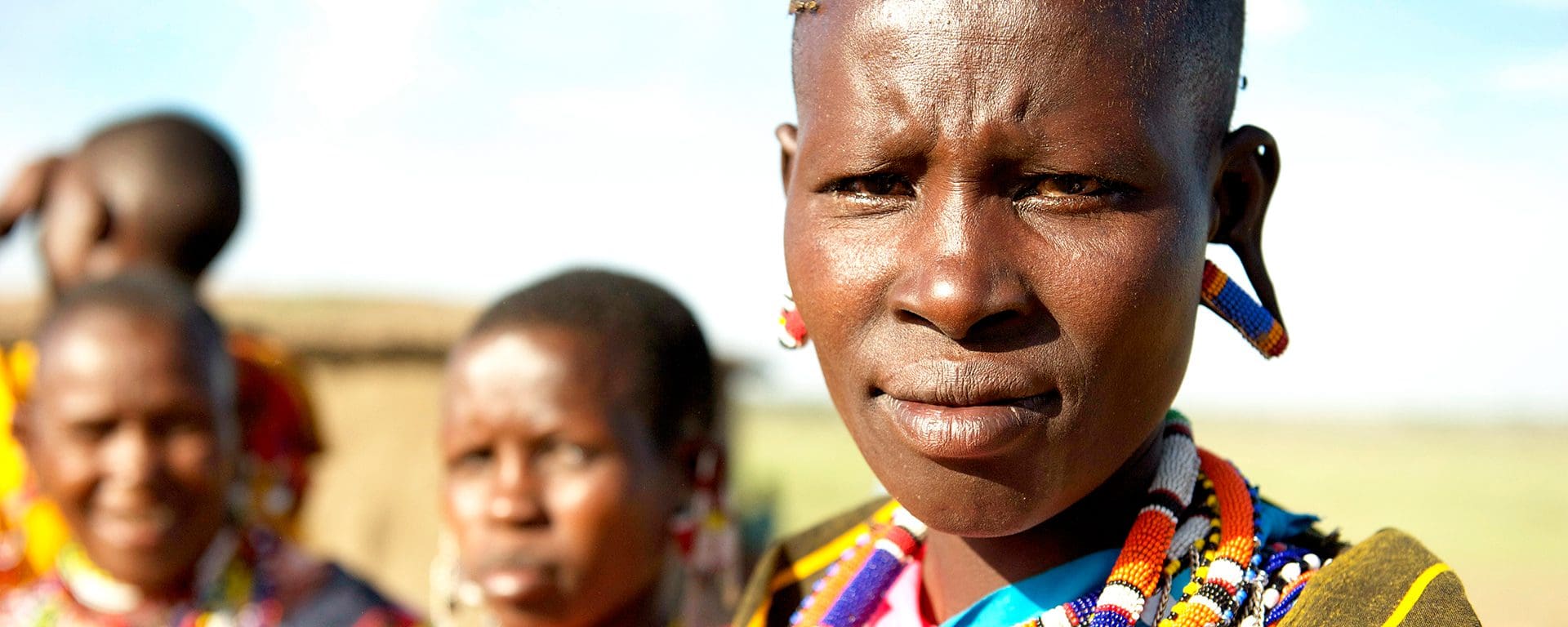
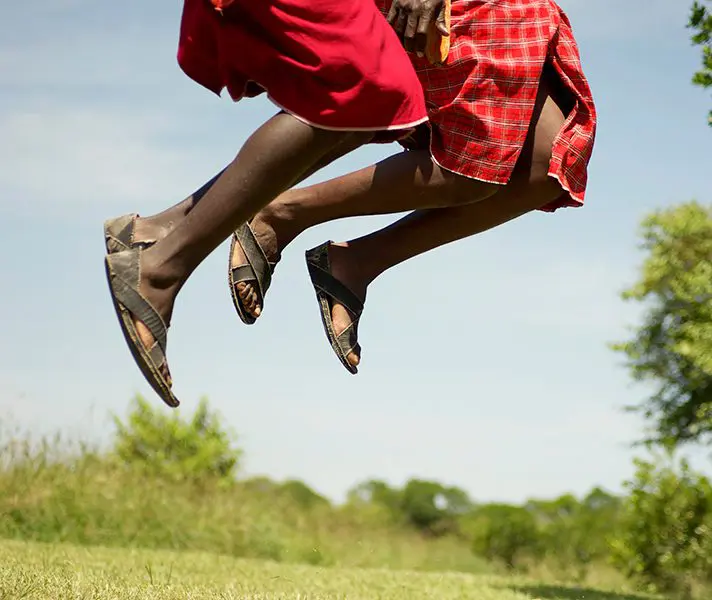
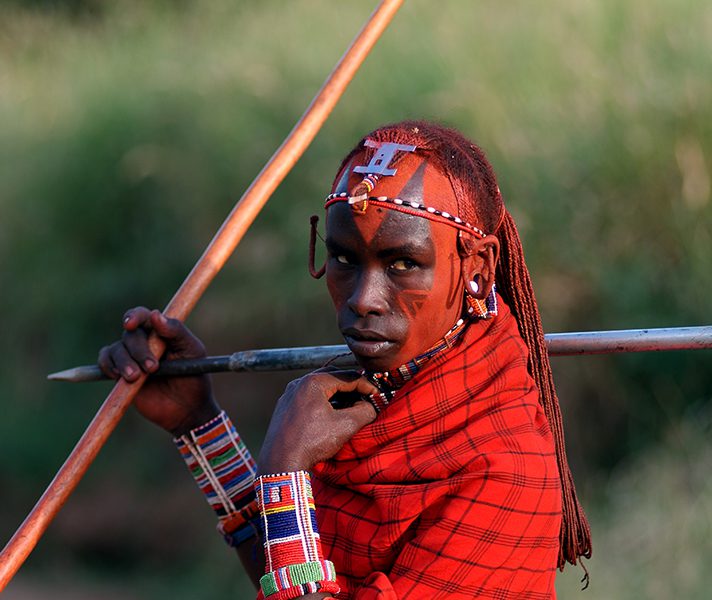
Life in the last outpost – the Himba
Northern Namibia is an elemental landscape of wind-carved rock and shifting sands sprouting tufts of hardy vegetation. It is stark and hauntingly beautiful but not the sort of environment in which you expect human beings to thrive. The pastoral Himba, guardians of secret springs and hidden grazing meadows, have made the vast forgotten plains north of Etosha their home.
Known locally as Kaokoland or Kaokoveld, northern Namibia welcomes travellers to a small handful of lodges, most set around the Kunene River. Guided visits to Himba villages are sensitively organised – not only because the Himba people are unused to a steady stream of Westerners, but also to conserve Kaokoland, one of Africa’s last remaining wild frontiers. Visitors are something of a novelty to the Himba people, who are often as ready to observe as to be observed – there is often a charming, mutual amusement in encounters.
The Himba are a striking-looking people. Once they come of age, the women apply a mix of butter fat and ochre – known as otjize – to their skin and hair, giving them a rich, red appearance. Aside from allowing them to braid their hair into elaborate styles that indicate their marital status, the mixture protects their skin from the sun and wards off biting insects. Himba society follows a traditional bilateral descent, which means both the maternal and paternal clans of a child’s parents are recognised and, while a son is raised in his father’s clan, he inherits the wealth (measured in cattle and goats) from his mother’s clan.
These remarkable people have survived against all odds – colonial attempts at genocide, an inhospitable landscape and the 1980s drought that killed 90% of their cattle. Today, you can encounter them on a fly-in itinerary that takes in game viewing at Etosha and the magnificent dunes of Sossusvlei.
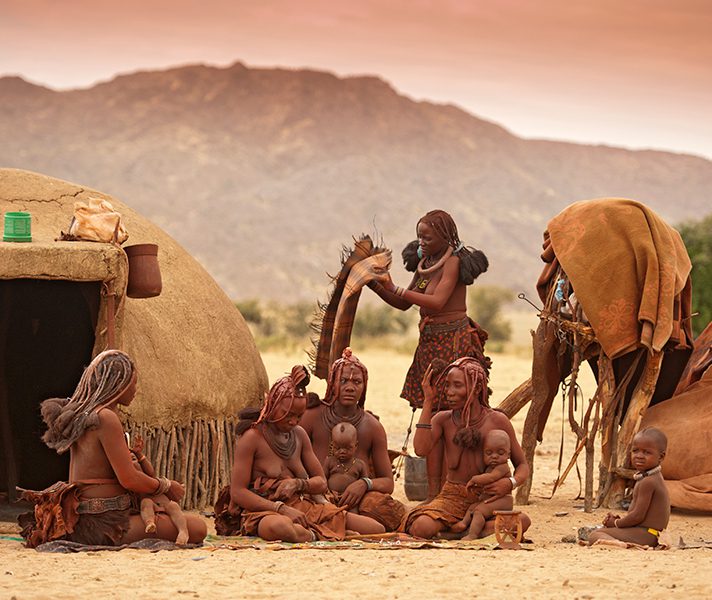

Travellers to Kenya‘s Masai Mara and Tanzania‘s Serengeti soon become familiar with the image of lean Maasai herdsmen, shrouded in their flame-coloured blankets watching over livestock or strolling purposefully across a wild horizon. As much a part of the landscape as the acacia trees they shelter under, the Maasai and their cattle have co-habited the East African steppes with its vast herds and super-sized predators since time immemorial.
Such a heritage is worth discovering. And by staying in one of the private Masai Mara or Serengeti conservancies, you put yourself in an environment where your guide may take you to his home village, to the scent of wood smoke rising from cooking fires and thorn-bush walls that keep cattle safe from lions. The highlight of my visit to a Masai homestead was witnessing the adumu or jumping dance performed by the morani (young warriors).
Making deep, throaty sighs and sharp exhalations, the morani form a circle and begin jumping vertically in stiff-legged unison, their heels never touching the ground – like a row of pistons in a hard-working engine. This remarkable display of virility and stamina is designed to draw admiring gazes from the maidens – future brides of the unmarried morani. The warriors goad each other into higher and higher leaps with good reason: the highest jumper captures the heart of the prettiest girl…
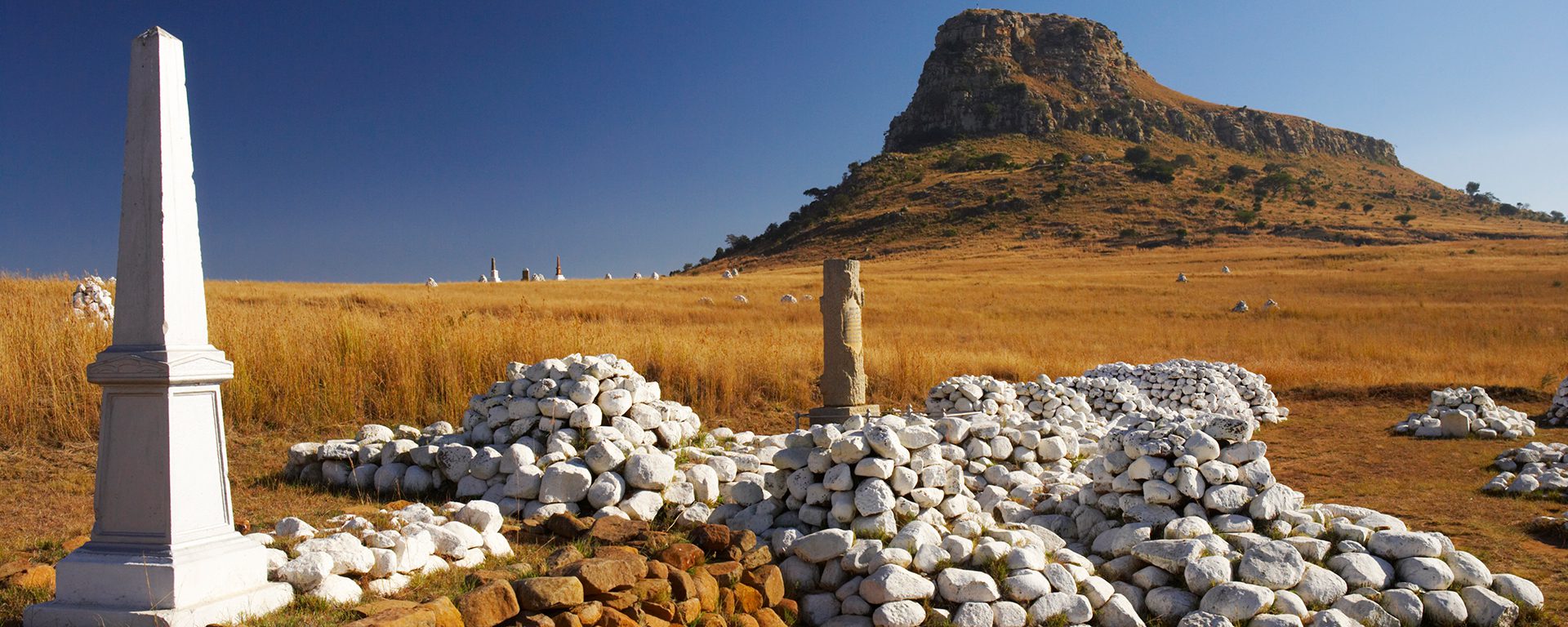
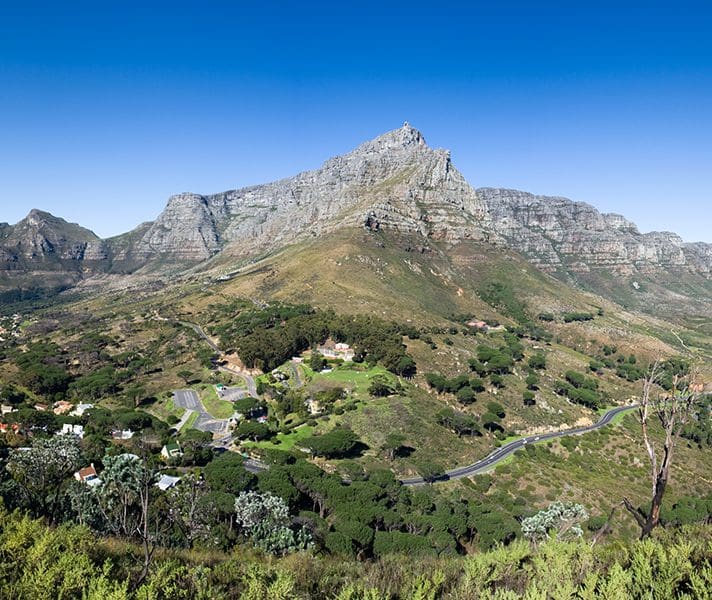

In South Africa‘s KwaZulu-Natal province, an ideal itinerary includes big game parks, the unspoilt Indian Ocean coast and a tour of the Battlefields. In the rolling green hills of this beautiful land, a powerful empire encountered a military nation with surprising results.
Walking among the scattered white-washed stones, I asked my guide what they represented. ‘Each mark where a British soldier fell, killed by a Zulu spear,’ he replied. This is Isandlwana, a sun-filled corner of KZN where, on a not-so-sunny day for the British Empire, 1 300 troops with firearms and canons were halted by an assegai-wielding (spear) Zulu army that marched out to defend their ancestral lands against the Imperial invaders.
Today, the sound of clanking cowbells and herdsmen’s whistles carry on the breeze over Isandlwana’s grasslands but in January 1879, it echoed with the terror and anguish of doomed soldiers. Little wonder then that the place tingles with an unquiet energy and traditional Zulu healers still visit the site to placate restless spirits. Those long past struggles are brought to life by the guides – passionate, expert storytellers, they conjure up such rich imagery that you’ll glance over your shoulder expecting to see the well-oiled machine of Zulu impi gathering into attack formation, or the hillocks crowned with smoke from British rifles, as the redcoats try desperately to turn the tide of the battle.
Isandlwana’s cultural legacy is both compelling and haunting – and there is something remarkable about remembering the British and Zulu soldiers who fought and died here.
Set on a sweeping bay and overlooked by the world’s most recognisable mountain, Cape Town lies in a region originally settled by the indigenous Khoi-san peoples, hunter-gatherers who left a fascinating legacy of archaeological treasure in the caves along the Cape south coast. By the mid-1600s, this southern tip of Africa had become the Dutch East India Trading Company’s vital re-fuelling post, serving the rapidly expanding colonial powers.
Imperial governments traded this temperate and fertile little colony like a favourite walking stick, passing it from Dutch to British to settler hands and back again. Waves of European traders stopped over on their journeys up the Swahili coast for ivory and slaves, or across the Indian Ocean for the spices and silks of the Orient. Legend has it that a Prince of Malaysia was exiled to the colony after a palace intrigue and brought with him the artisans, cooks, healers and musicians that founded today’s vibrant Cape Malay community.
Modern-day Cape Town’s extraordinary ethnic mix and delightful melting pot of cultures, languages, cuisine and music is the natural result. And it’s easy to sample this rich heritage too: enjoy a picnic under oak trees at a grand old Cape Dutch wine estate; indulge in an aromatic feast of Cape Malay cooking in the Bo-Kaap; take a stroll in the picture-perfect Company Gardens or visit the superb District Six Museum. Africa’s food, wine and design capital, Cape Town’s colourful heritage and easy-going people will simply steal your heart.
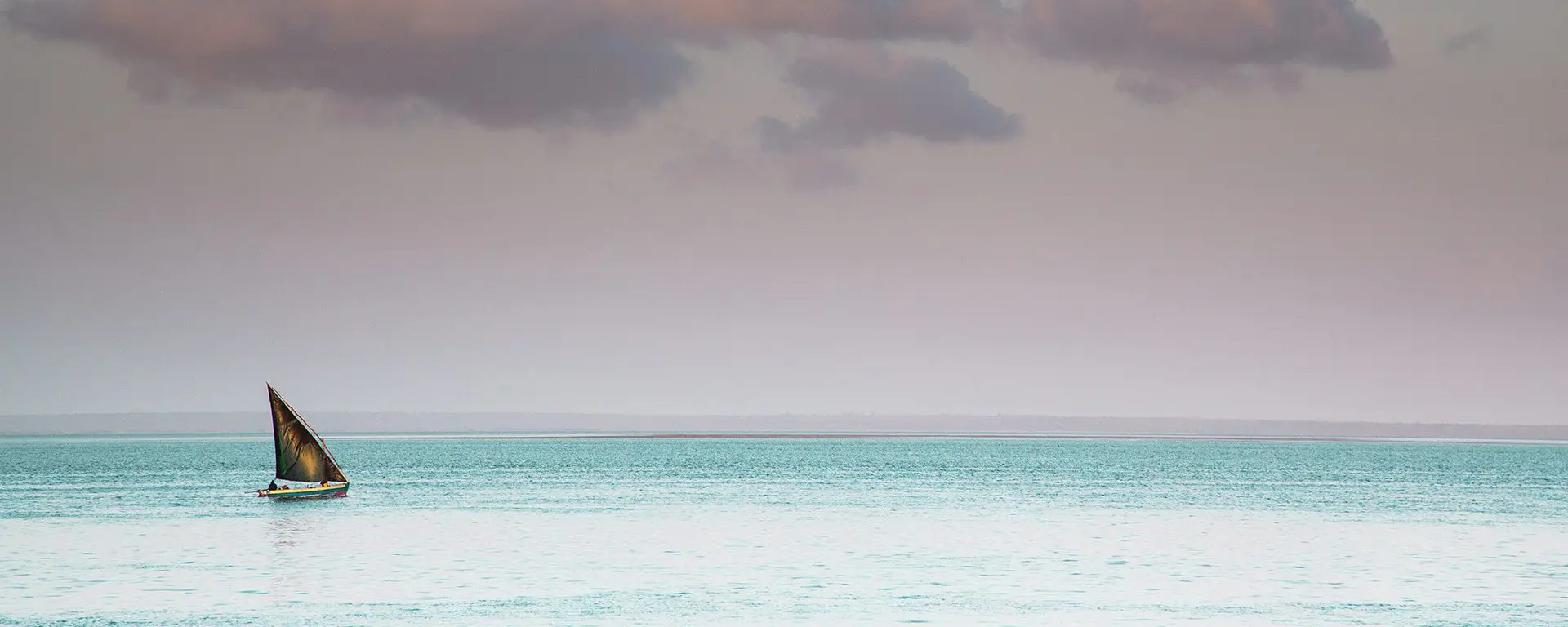
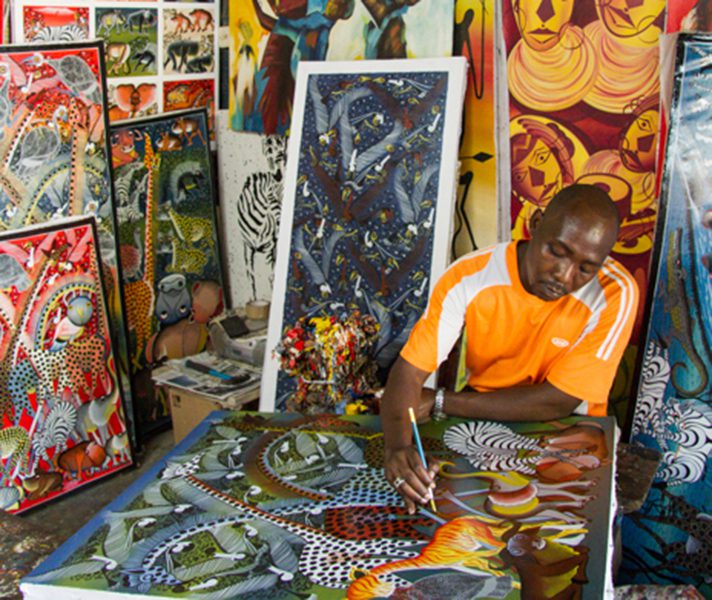
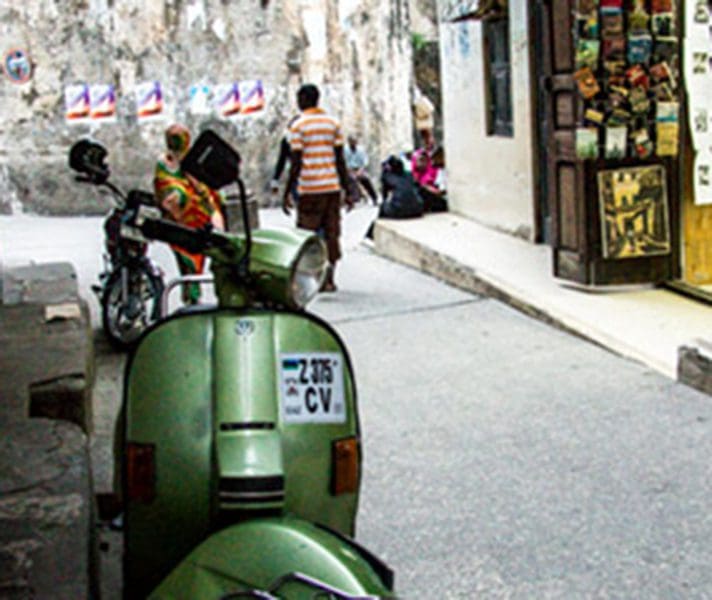
Most travellers heading on a Zanzibar vacation head straight for the exquisite beaches, but the Spice Island has a long and colourful history as a trade centre for aromatic spices and human labour. It’s well worth making time for a guided tour around Stone Town, the island’s capital and a world heritage site since 2000.
The town’s eclectic nature is evident the moment you arrive. Arab, Persian, Indian, European and African influences come together in a flourish of forts, churches, ruined palaces and mosques. Explore a maze of narrow alleys and carved doors that lead to secret courtyards, or turn the corner on a quiet street and find yourself in a colourful, noisy market. It’s the sort of place where you wander around with your camera constantly at the ready, jumping out the way of motorbike taxis and fending off rowdy little mobs of children.
Accommodation in Stone Town is limited to a handful of small, discreet hotels – ideal for a night or two before or after a beach holiday. Staff are always happy to recommend attractions and restaurants, and guided tours are easily arranged.